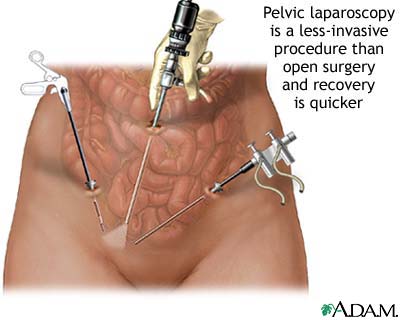Symptoms & Signs
More common symptoms of uterine fibroids are:
- Abdominal fullness, gas, or constipation
- Bleeding between periods
- Increase in urinary frequency
- Heavy menstrual bleeding (menorrhagia), sometimes with the passage of blood clots
- Menstrual periods that may last longer than normal
- Pelvic cramping or pain with periods
- Sensation of fullness or pressure in lower abdomen
- Pain during intercourse
Note: There are often no symptoms.
Diagnosis & Tests
A pelvic examination may show an irregularly shaped, lumpy, or enlarged uterus. Frequently, this diagnosis is reliable. In some cases, it is difficult to diagnose fibroids, especially in obese women. Fibroid tumors have been mistaken for:
- Pregnancy
- Ovarian tumors
- Inflammation of the fallopian tubes
- Uterine adenomyosis (a condition in which the uterine lining grows into the muscle wall of the uterus)
A transvaginal ultrasound or pelvic ultrasound may be done to confirm the diagnosis of fibroids. Sometimes, a pelvic MRI is used to confirm the diagnosis.
An endometrial biopsy (biopsy of the uterine lining) or laparoscopy may be needed to rule out cancer.
Pictures & Images
Pelvic laparoscopy Laparoscopy is performed when less-invasive surgery is desired. It is also called “band-aid” surgery because only small incisions need to be made to accomodate the small surgical instruments that are used to view the abdominal contents and perform the surgery.
Laparoscopy is performed when less-invasive surgery is desired. It is also called “band-aid” surgery because only small incisions need to be made to accomodate the small surgical instruments that are used to view the abdominal contents and perform the surgery.
-
Uterine fibroids: Overview, Causes
-
Uterine fibroids: Symptoms & Signs, Diagnosis & Tests
-
Uterine fibroids: Treatment
Review Date : 9/2/2009
Reviewed By : Susan Storck, MD, FACOG, Chief, Eastside Department of Obstetrics and Gynecology, Group Health Cooperative of Puget Sound, Redmond, Washington; Clinical Teaching Faculty, Department of Obstetrics and Gynecology, University of Washington School of Medicine. Also reviewed by David Zieve, MD, MHA, Medical Director, A.D.A.M., Inc.
![]()
